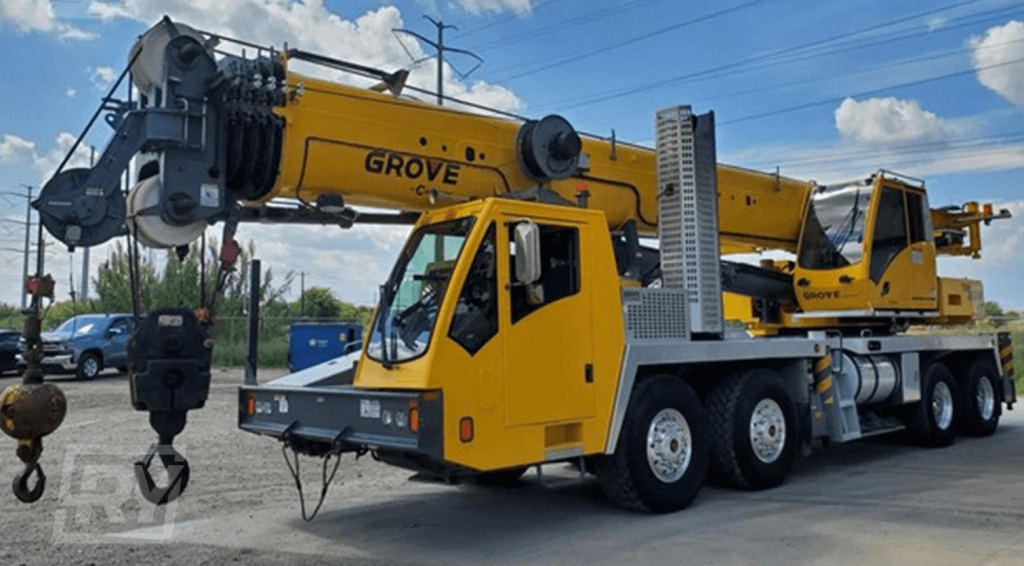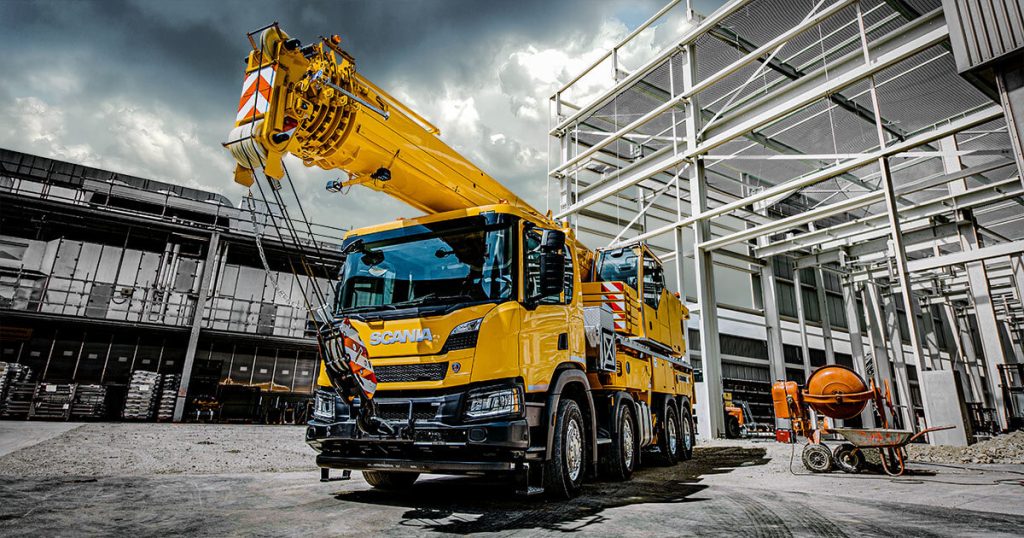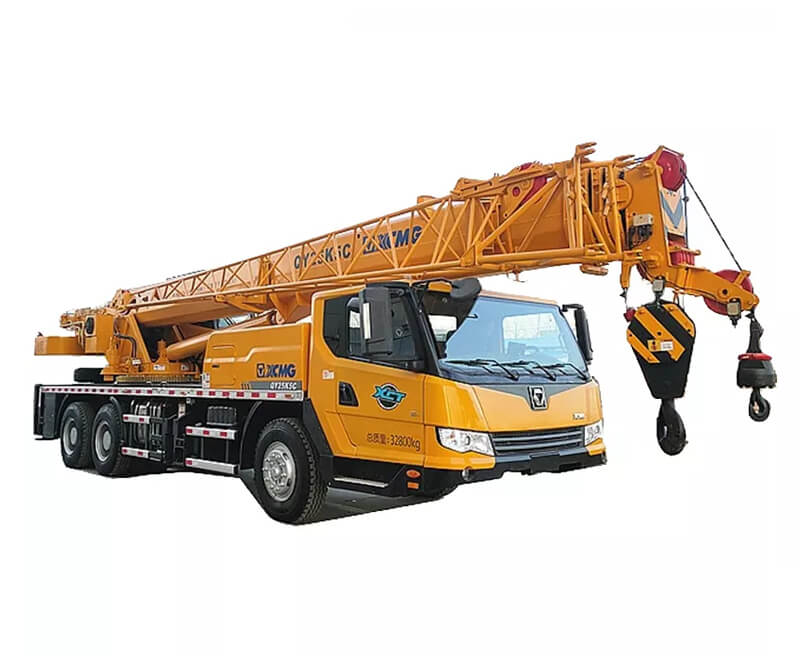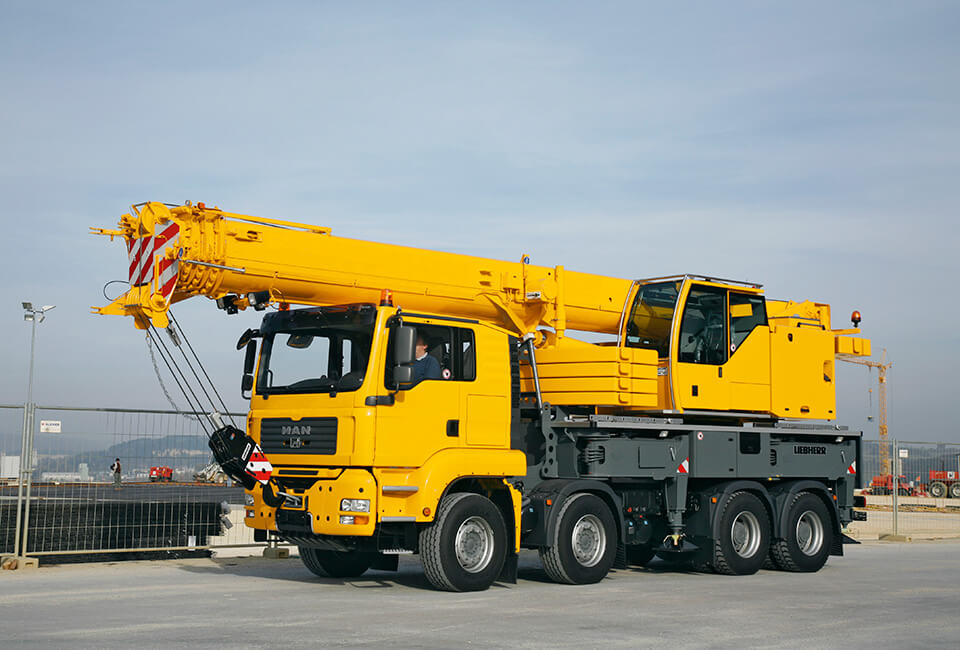The advent of cranes has revolutionized various industries by significantly reducing manual labor and the need for large amounts of manpower. This has resulted in a marked reduction in labor costs and a notable increase in productivity. Cranes, particularly telescopic truck cranes, have become indispensable tools for moving heavy loads quickly and efficiently, thus reducing the time required for loading, unloading, and moving materials. Additionally, the availability of rental mobile crane services has made it easier for companies to access these powerful machines without the need for a large initial investment.
Design and Components of Telescopic Truck Cranes
Telescopic truck cranes are distinguished by their sophisticated design, which includes several critical components:
– Base: This is the support structure of the crane, providing stability and a foundation for other components. The base ensures that the crane can handle heavy loads without tipping over.
– Metal Segments: These retractable sections form the telescopic boom. The boom extends and retracts to reach various heights and distances.
– Telescoping Mechanism: Typically comprising one or more hydraulic cylinders, this mechanism allows for the extension and retraction of the boom. Hydraulic cylinders provide the necessary force to lift and move heavy loads.
– Platform Stand: A welded metal structure on which all the rotating parts of the crane are installed. This stand supports the boom and allows it to swivel and rotate.
– Telescopic Boom Sections: The number of sections depends on the crane’s lifting capacity:
– Up to 10 tons: Usually two-section modifications.
– Up to 60 tons: Typically three-section varieties.
– Over 60 tons: Equipped with four-section units.
– Controlled Jib: Attached to the end of the last section, this element helps expand the coverage area and adjust the reach of the boom with a load. The jib provides additional flexibility for positioning loads.
– Control Panel: Located in the crane operator’s cabin, it regulates the position of the crane and the reach of the boom sections. Modern control panels are equipped with advanced technology for precise operations.

Varieties and Specifications of Telescopic Truck Cranes
Telescopic truck cranes can differ in several parameters, allowing them to be customized for specific tasks:
– Section Shape: Boom sections can have various shapes, such as rectangle, square, polyhedron, trapezoid, or ovoid. Ovoid sections provide the greatest strength and stability with minimal metal consumption.
– Additional Elements: The boom can be equipped with extensions and jibs for enhanced reach and versatility. These additions make the crane adaptable to a variety of tasks.
– Number of Motors: Cranes can be single-engine or multi-engine. Single-engine cranes perform cargo operations with one engine, while multi-engine designs use different motors for different mechanisms.
– Chassis Types: There are three main chassis types for truck cranes:
– Tracked: Provides stability and can operate on rough terrain.
– Truck-mounted: Offers high mobility and can travel on public roads.
– Self-propelled pneumatic: Combines mobility with the ability to handle heavy loads.

Applications of Telescopic Truck Cranes
Telescopic truck cranes are used across various industries due to their flexibility and efficiency:
– Construction: Their maneuverability and minimal ground pressure make them ideal for construction sites, where they can carry large structures and lift heavy materials to great heights. They are essential for tasks such as placing steel beams, installing concrete panels, and assembling prefabricated sections.
– Rigging: Compact self-propelled cranes are perfect for loading and unloading operations in warehouses and production sites. They can quickly move between different areas to handle materials and equipment.
– Repair and Installation: These cranes are optimal for restoration work at high altitudes and for assembling and installing engineering communications and heavy structures. They are used for tasks such as installing HVAC systems, repairing roofs, and maintaining tall buildings.
– Energy Sector: They are essential in the construction and maintenance of power plants, including wind and solar energy facilities. Cranes are used to erect wind turbines, place solar panels, and handle other heavy equipment.
– Transport and Logistics: Used for loading and unloading heavy cargo at railway and port terminals. They can handle containers, machinery, and other large items with precision and speed.
– Road Construction: For the installation of road signs, lighting masts, and communication lines. Cranes are used to place large signs, install traffic lights, and lay down communication cables.
– Emergency Rescue and Restoration: Provide fast and accurate movement of heavy objects in confined spaces during emergencies. They are used in disaster response, such as clearing debris and rescuing trapped individuals.

Advantages of Telescopic Truck Cranes
Telescopic truck cranes offer numerous advantages that make them indispensable in various industries:
– High Mobility: They can quickly move between sites without the need for additional transportation, saving time and money on logistics. Their ability to travel on public roads allows them to be easily relocated.
– Flexibility: The ability to quickly change the boom length allows these cranes to operate effectively in various conditions, including confined spaces. This adaptability makes them suitable for a wide range of tasks.
– Multifunctionality: Suitable for a wide range of tasks, from construction and installation to lifting heavy loads. Their versatility allows them to be used in multiple industries.
– High Load Capacity: Despite their compact size, these cranes can lift significant loads. This capability makes them ideal for heavy-duty tasks.
– Simplicity and Safety: Modern control and safety systems ease the operator’s work and reduce the risk of accidents. Features such as load indicators, safety interlocks, and remote control systems enhance operational safety.
Disadvantages of Telescopic Truck Cranes
While telescopic truck cranes offer many benefits, they also have some limitations:
– Stability Issues: To ensure smooth operation, the design includes mechanical, hydraulic, or pneumatic supports (outriggers). Proper use of outriggers is essential to prevent tipping.
– Non-synchronous Extension: Boom sections may extend non-synchronously, with certain sections pulling out before others. This can complicate precise positioning and requires careful control.
Leading Manufacturers of Telescopic Truck Cranes
Several global manufacturers are known for producing high-quality telescopic truck cranes:
– Grove: A leading manufacturer of self-propelled hydraulic cranes, offering all-terrain cranes, rough terrain cranes, mobile cranes, cranes for special military applications, industrial cranes, and telescopic crawler cranes. Grove cranes are known for their reliability and advanced technology.
– Link-Belt: Known for their crane equipment, they offer five models of telescopic crawler cranes with lifting capacities ranging from 50 to 230 tons. Link-Belt cranes are valued for their durability and performance.
– Sennebogen: This German manufacturer provides models with capacities from 16 to 130 tons. Sennebogen cranes are recognized for their precision engineering and robust design.
– Sany: Noted for their comprehensive range of construction machinery, including cranes. Sany cranes are known for their innovation and efficiency.
– Liebherr: Renowned for their high-quality and innovative crane designs, Liebherr offers a wide range of telescopic truck cranes. Their cranes are used in various demanding applications worldwide.
Conclusion
Telescopic truck cranes are invaluable assets in numerous industries due to their efficiency, versatility, and advanced design. Their ability to handle heavy loads, combined with high mobility and flexibility, makes them a preferred choice for many construction, logistics, and maintenance projects. With continuous advancements in technology and design, telescopic truck cranes will continue to play a crucial role in enhancing productivity and reducing labor costs across various sectors.

I have acted as a financial expert on the Today Show and Good Morning, America. I like to give reasonable advice on budgeting to people with any income level.
